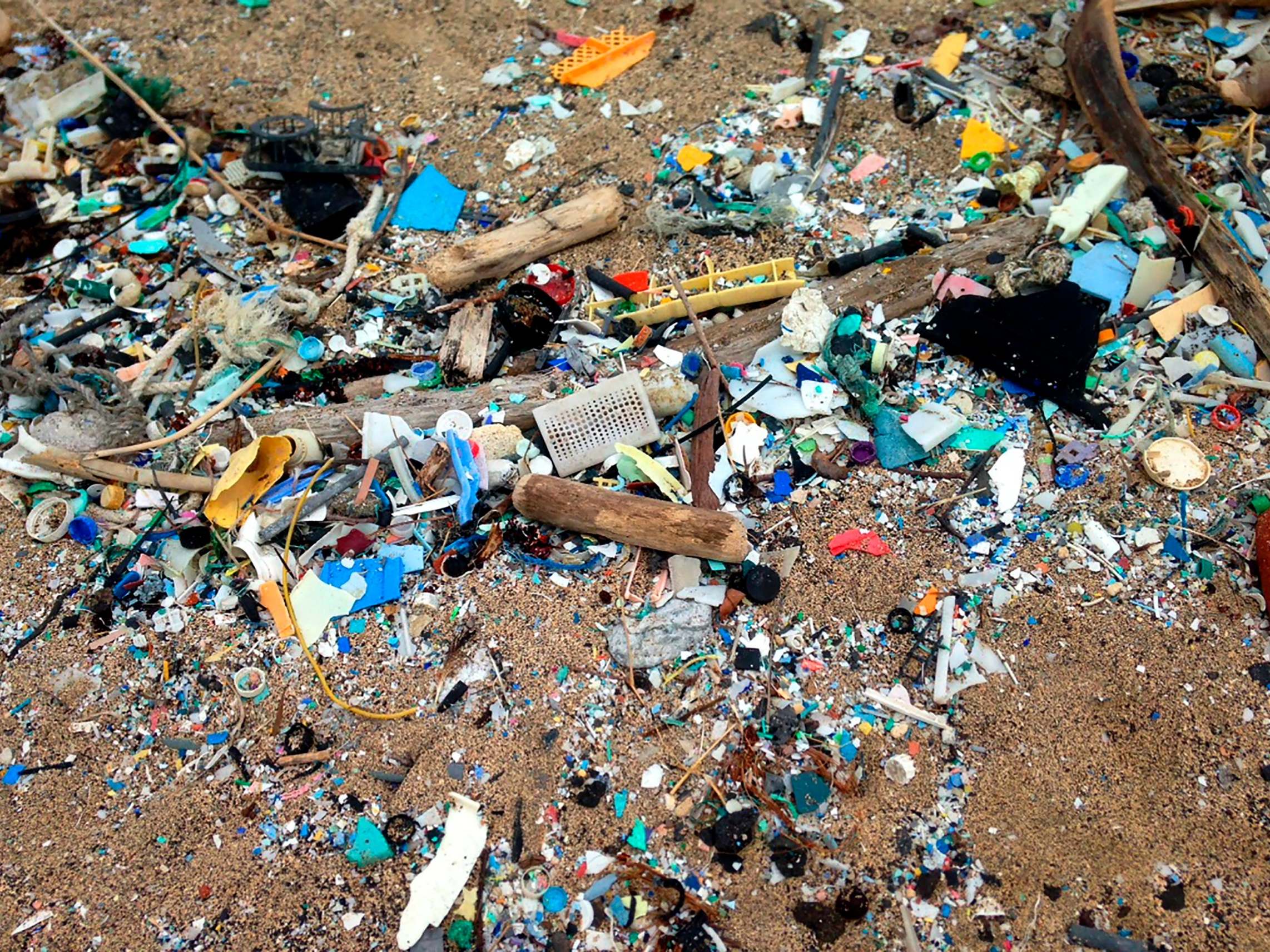This website uses cookies so that we can provide you with the best user experience possible. Cookie information is stored in your browser and performs functions such as recognising you when you return to our website and helping our team to understand which sections of the website you find most interesting and useful.

Microplastics have infiltrated every part of our world - the oceans, land, air and food supply - and now, scientists have discovered the presence of the tiny particles in human organs and tissues.
Some 300million tons of plastic waste is produced each year, according to Plastic Oceans, and while it is not biodegradable, products fragment into smaller and smaller pieces called microplastics - less than 0.2inches (5mm) -and nanoplastics, less than 0.001mm.
Microplastics wreak havoc on marine ecosystems and there is growing evidence of their impact on human health.
The new research, by two graduate students at Arizona State University (ASU), looked to see if microplastics were accumulating in human organs. A 2018 study already discovered that microplastics were found to have passed through the human gut.
Using 47 human tissue samples taken from lungs, liver, spleen and kidneys, the researchers, Charles Rolsky and Varun Kelkar, discovered components of plastic contamination in every sample.
Bisphenol A (BPA), which is still used to manufacture food containers despite links to health issues such as cardiovascular problems, was found in all 47 samples.
The students presented their findings on Monday at the American Chemical Society's (ACS) virtual expo. Mr Rolsky said: “You can find plastics contaminating the environment at virtually every location on the globe, and in a few short decades, we’ve gone from seeing plastic as a wonderful benefit to considering it a threat.
“There’s evidence that plastic is making its way into our bodies, but very few studies have looked for it there. And at this point, we don’t know whether this plastic is just a nuisance or whether it represents a human health hazard.”
This is believed to be the first study to examine micro- and nanoplastics in human organs, where the samples have come from people with documented environmental exposure.
“The tissue donors provided detailed information on their lifestyle, diet and occupational exposures,” said Dr Rolf Halden, who runs the ASU lab. “Because these donors have such well-defined histories, our study provides the first clues on potential micro- and nanoplastic exposure sources and routes.”
The impact of plastic pollution on people is the subject of a growing number of studies. Last year, Dr Ivone Mirpuri, a hormone specialist, found that the chemicals used to make plastic may be triggering the rise in a range of diseases and conditions in people from reduced fertility to obesity, diabetes, cancer, heart attacks and neurological conditions, Environmental Journal reported.
There also have been studies on their impacts on other species, including evidence that microplastics can damage oyster fertility and negatively impact respiratory and reproductive systems in fish.
The students developed an innovative method to extract the plastics from the samples for analysis. The samples were taken from a large collection of brain and body tissues that have been gathered to study neurodegenerative diseases, like Alzheimers.
Along with BPA, the research team also found polycarbonate (PC), polyethylene terephthalate (PET) and polyethylene (PE) in the human tissue.
“We never want to be alarmist, but it is concerning that these non-biodegradable materials that are present everywhere can enter and accumulate in human tissues, and we don’t know the possible health effects,” Mr Kelkar said.
“Once we get a better idea of what’s in the tissues, we can conduct epidemiological studies to assess human health outcomes. That way, we can start to understand the potential health risks, if any.”



 Africana55 Radio
Africana55 Radio 

